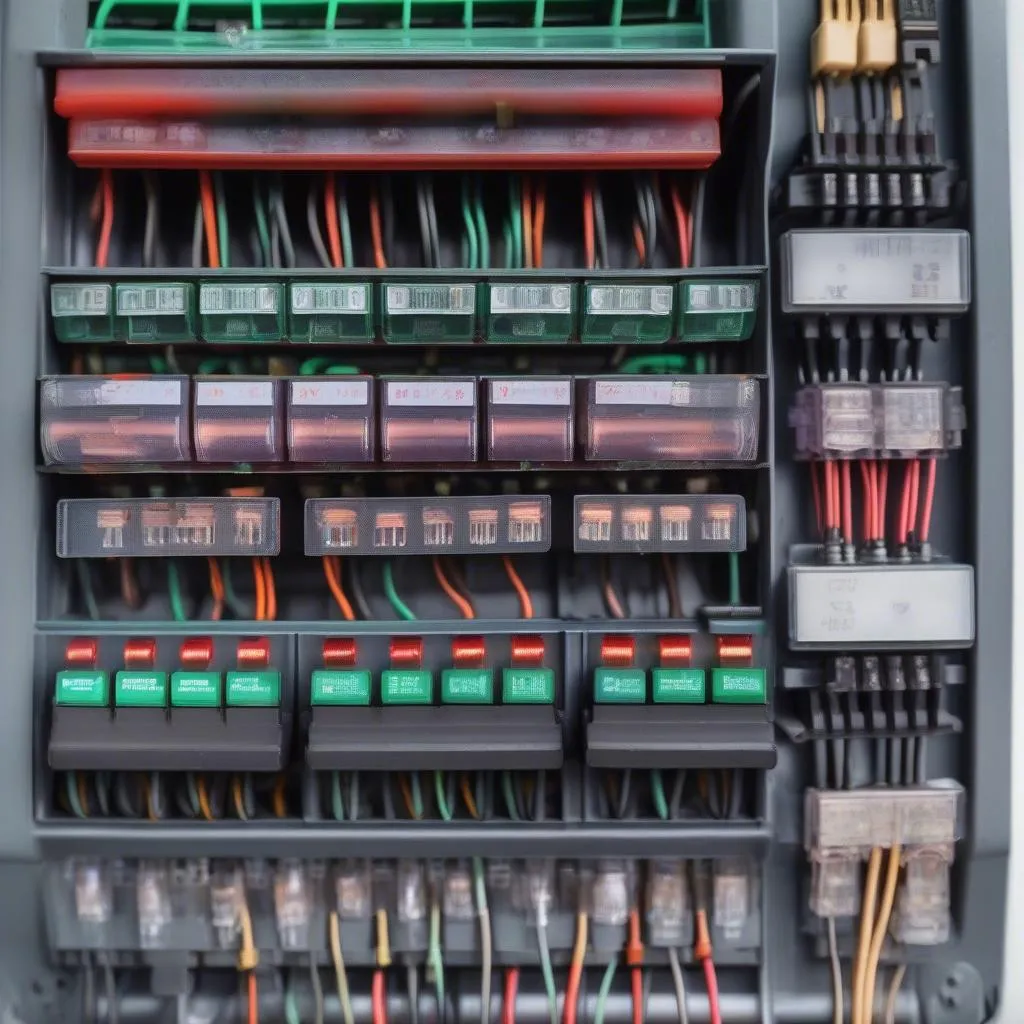Dealing with a malfunctioning car anti-theft system, particularly a spider anti-theft device, can be incredibly frustrating. While these systems are crucial for vehicle security, encountering issues can lead to unexpected lockouts and starting problems.
Understanding Spider Anti-Theft Device Malfunctions
There are several reasons why your spider anti-theft device might be acting up. Common culprits include:
- Dead Battery in Key Fob: A depleted battery in your key fob can disrupt the signal between the key and the vehicle’s immobilizer system, leading to starting issues.
- Faulty Wiring: Damaged or corroded wiring within the anti-theft system can cause communication breakdowns between different components.
- Malfunctioning Sensors: If the sensors responsible for detecting unauthorized entry are faulty, they may trigger the alarm system unnecessarily or prevent the vehicle from starting.
- Control Unit Issues: Problems with the central control unit responsible for managing the anti-theft system can lead to widespread malfunctions.
Identifying a Spider Anti-Theft Device Problem
Recognizing the signs of a faulty spider anti-theft device is crucial for a swift resolution. Look out for these telltale signs:
- Rapid Flashing Dashboard Lights: Continuous or intermittent flashing of your vehicle’s security light, often depicting a car with a key or padlock symbol, can indicate an anti-theft system issue.
- Engine Cranking but Not Starting: If your engine cranks but refuses to start, especially after recent jump-starting or battery replacement, the immobilizer system might be preventing ignition.
- Key Fob Unresponsive: Difficulty locking or unlocking your car doors with the key fob, even with fresh batteries, could point to a communication problem within the anti-theft system.
Equipment for Addressing Anti-Theft System Issues
To diagnose and potentially resolve spider anti-theft device issues, having the right tools is essential:
- Diagnostic Scanner: A professional-grade OBD-II diagnostic scanner, like those offered by CARDIAGTECH, enables you to read and interpret trouble codes stored in your vehicle’s computer, pinpointing the root cause of the problem.
- Digital Multimeter: This versatile tool helps test the electrical continuity and voltage of various components within the anti-theft system, such as wiring harnesses and sensors.
- Basic Hand Tools: A set of screwdrivers, pliers, and wire strippers proves useful for accessing and inspecting different parts of the system.
Troubleshooting Guide
Before attempting any fixes, prioritize safety and consider consulting a qualified automotive electrician for complex issues. Here’s a simplified approach to tackling common anti-theft system problems:
-
Replace Key Fob Battery: Start with the simplest solution. Replace the battery in your key fob with a fresh one, ensuring proper installation. Test if this resolves the issue.
-
Check Fuses and Relays: Consult your vehicle’s owner’s manual to locate the fuses and relays associated with the anti-theft system. Inspect them for any signs of damage or blown fuses. Replace if necessary.
 Car Fuse Box
Car Fuse Box
-
Inspect Wiring and Connections: Carefully examine the wiring harnesses and connections related to the anti-theft system, particularly around the steering column, ignition switch, and control unit. Look for any signs of damage, loose connections, or corrosion. Repair or reconnect as needed.
-
Use a Diagnostic Scanner: Connect a diagnostic scanner to your vehicle’s OBD-II port, usually located under the dashboard on the driver’s side. Read any stored trouble codes related to the anti-theft system. Refer to a reliable code database or consult with a professional to interpret the codes and guide your next steps.
Frequently Asked Questions
Q: Can I bypass the spider anti-theft device entirely?
A: While technically possible, bypassing the anti-theft system is highly discouraged. It compromises your vehicle’s security and might be illegal in some jurisdictions.
Q: What if I’ve tried everything and the problem persists?
A: For persistent issues, seeking assistance from a qualified automotive electrician specializing in vehicle electronics and anti-theft systems is recommended. They possess the expertise and tools to diagnose and resolve complex problems effectively.
Q: Are there any preventative measures to avoid future anti-theft system issues?
A: Regularly inspecting your vehicle’s battery, wiring, and key fob battery can help prevent unexpected issues with the anti-theft system. Additionally, addressing any underlying electrical problems promptly can minimize the risk of future malfunctions.
Q: Can software updates address spider anti-theft device problems?
A: In some cases, software updates released by the vehicle manufacturer might address known issues with the anti-theft system. Consulting your dealership or a reputable automotive electrician specializing in software updates is advisable.


